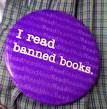
Roll of Thunder
Hear my cry
Over the water
Bye and bye
Ole man comin’
Down the line
Whip in hand to
Beat me down
But I ain’t
Gonna let him
Turn me ‘roun
I didn’t want to read this book. It felt too much like a text book, one of those required reading that are always too preachy or just plainly boring, but highly educational. I should have known better, given it won the Newbery Medal, and I have yet to read a book which won that medal that I didn’t like.
Another reason why I was reluctant is that I knew it had to do with racism against black people in America, and since I hate injustices, I thought I couldn’t read this without feeling really angry and ending up not enjoying it at all.
I was partly right. It is about injustices and discrimination but the story and the characters won me over almost instantly. The slight problem I had at the beginning was with its use of southern American accent, but I got used to it pretty quickly and it actually added to the story.
Roll of Thunder, Hear my Cry is set in the cotton-growing farmlands of Mississippi delta in the 1930s and it tells the story of the Logans, a somewhat privileged family because, unlike the rest of the black people in the area, they own their own land and they’re proud of it. Their story is told through the eyes of their only daughter Cassie, a strong-head 9 year-old, who slowly and sadly realises that, although slavery had been abolished almost 70 years earlier, inequalities are still very much alive, carried on though intimidation by most of the white people. Schools are still divided between black and white, and while white kids are carried to school by bus, black students have to walk, no matter how far their house is.
Being the daughter of a well-educated and strong-minded teacher, Cassie finds hard to accept these differences and can’t understand the reason why she should be ashamed for being what she is.
There are few scenes that I won’t easily forget: the humiliation that Cassie and her brothers have to suffer every time the school bus splashes them with mud, the anger Cassie feels (and rightly expresses) when she is ignored in the grocery shop, the way a teacher could be dismissed so easily for no obvious reason, other than intimidation.
And yet, even if it was a tale of inequality and injustice, it still had the warm feeling of comfort that only loving families can give. Cassie and her brothers are protected by a circle of grown up figures that teach them the rules of the world, advice them on how to behave, what to accept and what to change. Sometimes these advices seemed questionable to me. For instance, when a white kid tries to be their friends, constantly showing them to be different from his arrogant family, Cassie’s father warns them against this kind of friendship, saying that times are not ready for that yet, and when the white kid will grow up, he will learn to be just like the rest. Instead of encouraging a little change that could show things could be different, their father decides to be defensive and sceptic. Aside from this, he and their mother try to teach them their best values, while trying to cope with the reality in which they’re living.
One of my favourite quote is a wonderful metaphor that compares the strength of one little fig tree with their own:
You see that fig tree over yonder, Cassie? Them other trees all around…that oak and walnut, they’re a lot bigger and they take up more room and give so much shade they almost overshadow that little ole fig. But that fig tree’s got roots that run deep, and it belongs in that yard as much as that oak and walnut, It keeps on blooming, bearing good fruit year after year, knowing all the time it’ll never get as big as them other trees. Just keeps on growing and doing what it gotta do. It don’t give up. It give up, it’ll die. There’s a lesson to be learned from that little tree, Cassie girl, ‘cause we’re like it. We keep doing what we gotta, and we don’t give up. We can’t.
All in all, it’s a very readable book, and I understand why it became a classic, even though I’d have preferred it to be a bit more subversive!









